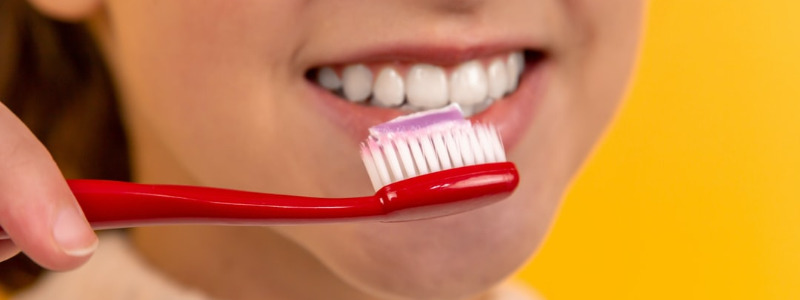Contents
Summary
Teeth whitening toothpaste is just like any kind of toothpaste, but with added polishing and whitening agents. While whitening toothpaste will not likely have much effect on deep intrinsic stains, it may be just the right thing to help control day-to-day stains caused by eating, drinking or smoking.
Description
Teeth whitening toothpaste is designed to lighten the appearance of surface stains on teeth. This is done with a mild abrasive that breaks down the protein pellicle by gently polishing the enamel. Mild abrasive ingredients may include baking soda (sodium bicarbonate), common table salt (sodium chloride), silica dioxide, or bamboo powder.
Many whitening kinds of toothpaste also include the bleaching agent carbamide peroxide. This ingredient can penetrate the enamel and change the tooth color, but since the duration of direct contact with the tooth is only about 2 minutes while brushing, the effect is very limited.
Some silica-based whitening toothpaste includes the chemical ingredient blue covarine. Blue covarine adheres to the enamel, effectively covering up stains and reflecting more light. It has consistently proven effective in making teeth appear whiter immediately after use.
Whitening toothpaste alternatively use enzymes instead of abrasives to prevent new stains from settling on the enamel. They do this by lessening the pellicle layer to which stains adhere. While the effect may not be as long-lasting as some other methods, the enzymes are non-abrasive which means they won’t harm enamel.
Results
Whitening toothpaste can only superficially influence tooth color. They cannot change the natural, yellowish color of the dentin which shows through the translucent enamel because they cannot reach through. Some products claim to whiten teeth up to three shades. This is achievable in cases where stains are mostly external (extrinsic).
Depending on the specific whitening formulation you may notice results immediately, or, more typically, after 14 days of use or more.
Pros and Cons
The main advantage to using whitening toothpaste is that there is usually nothing more to do than your usual daily brushing. Only the toothpaste is different.

There are probably two main disadvantages with whitening toothpastes. One is that, if used too often (eg. brushing more than two times a day) they can wear down the enamel overtime. Since the main active ingredients in whitening toothpastes are abrasives, they could do more damage to enamel than intended if a person has a habit of over brushing.
Compared to toothpastes, gels and strips tend to have higher concentrations of whitening agents and, because of the method of application, the whitening ingredients stay on the teeth longer. This means they will often provide better and faster results than toothpaste. The toothpaste, however, has the advantage of causing less sensitivity.
Tips and Guidelines for Use
Here are a few tips on how to get the best effect out of whitening toothpastes:
- Best used in combination.Whitening toothpastes are useful products to have in your whitening routine, but provide the best benefit if used in combination with a treatment containing a bleaching agent. The toothpaste will address superficial stains and the bleaching agent will work on deeper stains. The whitening toothpaste will help keep teeth appearing white while also fighting cavities and gingivitis, and keeping enamel strong.
- Whitening toothpastes are abrasive. Excessive use of whitening toothpastes can wear down enamel over time. If you need to brush more than twice a day, it would be best to use standard toothpaste for those extra brushing.
- Avoid products with plastic microbeads. One of the recent issues in the news is the concern over plastic (polyethylene) microbeads that some toothpaste manufacturers have added to their whitening toothpaste. Dentists and dental hygienists started to notice the small beads embedded in people’s gums and teeth. Because of these concerns, toothpaste manufacturers have already started eliminating the microbeads from their production with all products expected to be completely microbead-free within a year.

